One Hundred Years of Fierce Female Leadership at the UW–Madison School of Nursing
By Rebecca Jamieson, MFA
Special thanks to Laurie Glass ’71, PhD, RN, FAAN, and Pat Lasky, MS’68, PhD, RN, for their contributions, support, and historical expertise.
Portraits by Daniel Gardiner, Layout by Jackapan Pairin.
They came from big cities and small towns. They served during wars, economic collapse, sweeping cultural and political change, and a global pandemic. They fought against oppression and the belief that nurses were second-class health care professionals who didn’t need higher education. They shared a vision of transforming health care through nursing education, research, and practice. They were all uniquely different leaders. They were all women. They are the eight deans and directors who serve or have served the School of Nursing throughout its first one hundred years.
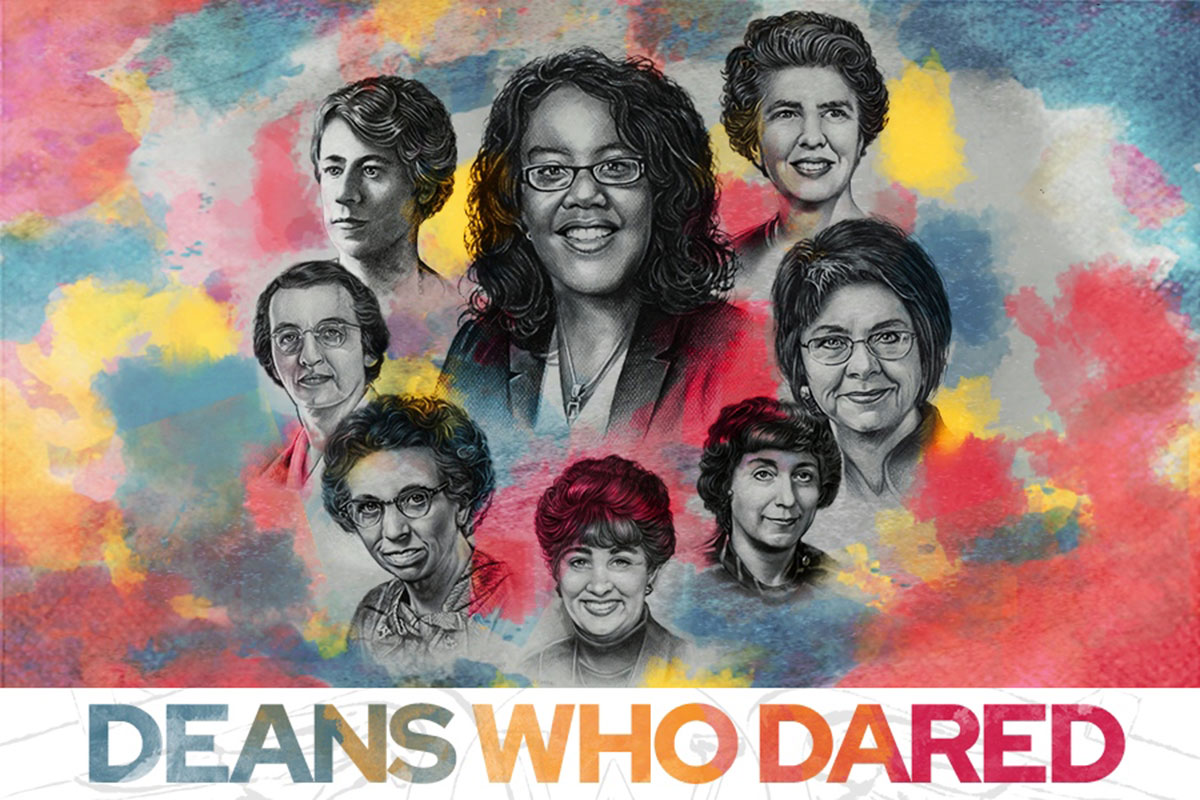
The School of Nursing is the only school or college at UW–Madison to have had only female deans throughout its history. Throughout the next few pages, you’ll meet each one and learn about the impact she had on the School, the state of Wisconsin, and the world.
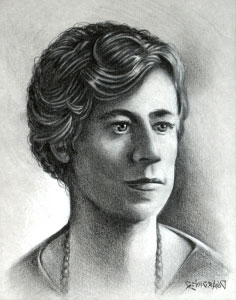
The Visionary
Helen Denne Schulte: 1924-1937
Helen Denne Schulte, RN, didn’t want to be director of the new UW–Madison School of Nursing. The School’s first attempt to start four years earlier had been rocky. Although it admitted the first class of five students in 1920, poor planning by the University led to the school closing partway through the first semester. As a result, the students transferred to a school of nursing in Milwaukee to complete their education. The initial director, Florence Patterson, was forced to leave as well. The school was on financial thin ice, and its future looked less than rosy.
So, when Denne Schulte was asked to serve as director of the reopened School of Nursing four years after its troubled beginning, she was understandably hesitant. Yet, after a few trips to Madison, she made a leap of faith and accepted the position.
Denne Schulte grew up in Peterborough, Ontario, Canada. She received her bachelor of arts (BA) from Queens University in Kingston, Ontario in 1911, and a diploma from the Presbyterian Hospital School of Nursing in Chicago, Illinois, where she graduated in 1915. She served as a nurse in Canada and England during World War I, and was awarded The Order of the Royal Red Cross for outstanding service. After the war, she returned to the Presbyterian Hospital, where she held roles as supervisor, instructor, and assistant superintendent of their nursing school.
Her hesitancy surrounding her new position at UW–Madison was not unwarranted. University leadership and faculty were unconvinced that funding for nursing education was wise or necessary. Then-President Edward Asahel Birge bluntly told Denne Schulte that there was “no money,” and parents would have to be convinced that sending their daughters to the program would be a good investment. Denne Schulte also had the daunting task of persuading faculty that teaching nursing courses deserved their time and energy. Yet, against the odds, she built support from leaders and faculty.
The challenges kept coming, but Denne Schulte rose to meet them. After arriving in Madison, she faced a staggering workload. She not only juggled responsibility for establishing, directing, and teaching at the fledgling school, she also served as superintendent of the nursing service in the newly established Wisconsin General Hospital. Despite these huge demands, Denne Schulte managed to build a solid foundation for the School, actively participated in several professional nursing organizations, and engaged in her own informal studies.
When the Great Depression hit in 1929, many people lost their homes and jobs, with unemployment as high as 24.9%. Public health nursing activities were cut, and private nurses were let go because no one could afford them. Hundreds of unemployed nurses stood in bread lines, joining many others who didn’t know where they’d get their next meal.
Denne Schulte was deeply concerned about the unemployed nurses, and she hatched a creative plan to help. She created an arrangement that let two nurses share one position at half time and half pay. In their free time, Denne Schulte invited the nurses to enroll at UW–Madison to further their education and give them better prospects for the future.
She married Walter Schulte in 1937 and moved to Freeport, Illinois, where she retired from nursing. By the time she left the School of Nursing, she had numerous accomplishments. She advocated for the School to be recognized within the University, grew the number of students from 11 in 1924 to 136 in 1937, saw 194 students complete the requirements for the nursing certificate, and developed an exchange program for nurses with at least one other university hospital.
Even after her death in 1971, Denne Schulte kept the School’s future in mind. She left money for the education of registered nurses, and funded the first named professorship in the School. The inaugural Helen Denne Schulte professor was named in 1973.
UW Medical School historian Paul Clark writes that Denne Schulte was “a crusader.” School of Nursing Dean Helen Bunge, Cert’30, EdD, MA, RN, believed Denne Schulte’s commitment to “establishing a school with the primary focus on educating the student (rather than service to the hospital) did more for the school than any other factor” in its success.
Despite her initial reluctance and the incredible obstacles that she faced, Denne Schulte’s contribution to the School of Nursing was remarkable. One hundred years later, her legacy lives on.
The Stabilizer
Christina Murray: 1938-1948
When Christina Murray, Cert’27, RN, succeeded Denne Schulte as director of the School of Nursing in 1937, she had no idea that she would have to lead the School through one of the most challenging periods in U.S. history. Just as the country was beginning to recover from the Great Depression, it was swept into World War II.
“On Monday, December 8, 1941, eleven o’clock classes were cancelled,” writes Pat Lasky, MS’68, PhD, RN, and Laurie Glass ’71, RN, PhD, FAAN. “Students crowded around the radio in the lounge of the Nurses’ Dormitory to listen to the President’s announcement of war. Many of those listeners volunteered for service before the war was over. Most had brothers, friends, fiancées, and husbands, enter the service. No one was untouched by the war.”
Like Denne Schulte, Murray was Canadian. She graduated from the Royal Victorian Hospital School of Nursing in Montreal, and she held a BA from the University of Saskatchewan. Prior to entering the nursing profession, she taught within the public school system. She then taught at the UW–Madison School of Nursing from 1924-25 before leaving Wisconsin in 1930 to teach at hospitals in Ontario and British Columbia.
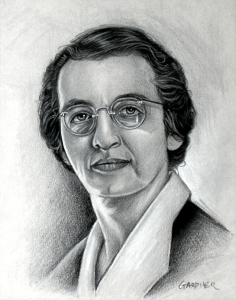
Murray was passionate about international nursing, and took a course in hospital administration and teaching in schools of nursing at the Bedford College in London, England, in 1934. While abroad, she visited schools in other countries so she could study their programs. She visited Poland, Latvia, Finland, Sweden, Norway, and Denmark, and brought the insights she gained into her teaching. Little did she know that Europe would soon be at war and her life back in North America would change dramatically.
During World War II nearly 300,000 Wisconsin residents, a tenth of the state’s population, served in the Armed Forces, and 8,300 lost their lives. Over 70,000 American nurses, including many from Wisconsin, served. Because of the huge need for nurses, enrollment in the School of Nursing skyrocketed. Students also supported the war effort in their free time. They grew victory gardens, knitted socks for overseas soldiers, and entertained members at the United Service Organization.
After the war, the challenges continued. There was a severe nursing shortage nationwide as many women left the field to go to college, pursue other careers, or become stay-at-home mothers. Yet the war also had positive impacts on the field of nursing, including higher standards for nursing education and federal funds for undergraduate nursing students. Many nurses used the GI Bill to pursue additional education.
Not only did Murray lead the school through one of the most devastating wars in world history, but she also established the School’s first major in public health nursing. Public health nurses were in high demand in Wisconsin. They were needed to work in schools, serve in economically disadvantaged communities, and help fight the spread of tuberculosis, which was the leading cause of death in the U.S. at the time.
Murray’s accomplishments are even more impressive given the fact that she did it all while managing a chronic illness. Murray had severe asthma, which often impacted her life and work. But despite her health challenges, she continued to break new ground for the School throughout her tenure.
Murray died from asthma-related complications on December 4, 1948.
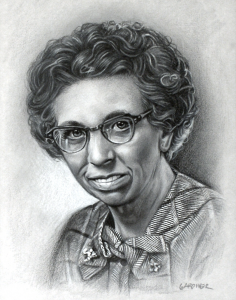
From First Graduate to Director
Margery Maclachlan: 1949-1959
In 1927, Margery MacLachlan, Cert’27, BA, was part of the School of Nursing’s first graduating class and is on record as being the very first graduate. Did this young woman from small-town Wisconsin ever imagine that 20 years later, she would lead the entire school?
MacLachlan grew up in McFarland, Wisconsin. After graduating from UW–Madison, she began her nursing career as an instructor at the Luther Hospital School of Nursing in Eau Claire, Wisconsin, before gathering an impressive list of credentials teaching at the Yale University School of Nursing and the Presbyterian Hospital School of Nursing in Chicago. MacLachlan served as director of nursing service as well as director of the nursing schools in Concord, New Hampshire; Decatur, Illinois; and Honolulu, Hawaii. She also served as hospital consultant and supervisor of civilian hospitals in Hawaii during World War II.
Despite her wide range of experience, MacLachlan never completed more than a BA. When she became director at the UW–Madison School of Nursing in 1949, it was unusual for a director of a university program to hold less than a master’s degree. Some believed that MacLachlan’s educational preparation wasn’t enough for her responsibilities.
Some colleagues also bristled at her personality. Nursing history pioneer Signe Skott Cooper described MacLachlan as a “blunt, outspoken woman,” and believed that her forthrightness alienated colleagues. Yet Cooper also said that “her dedication to the school and to maintaining high academic standards was without question.” MacLachlan deeply cared about students’ well-being and often gave her own money to assist low-income students.
Despite the naysayers, MacLachlan made significant achievements as director. She oversaw extensive curriculum changes and enrollment in the school increased.
MacLachlan died of cancer in August 1963. In honor of her service, MacLachlan House in Witte Hall was named for her.
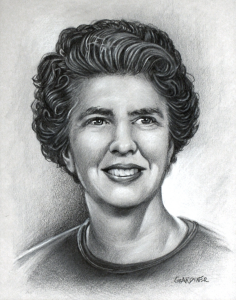
A Leader in Research: Helen Bunge: 1960-1969
Helen L. Bunge, Cert’30, EdD, RN, was the first of the School’s leaders to be titled dean. She was first appointed director of the School of Nursing as well as associate dean of the Medical School (now referred to as the School of Medicine and Public Health) in July 1959, and officially began her deanship of the School of Nursing in 1960.
Bunge grew up in La Crosse, Wisconsin, and received her BA in sociology from UW–Madison in 1928 before going on to earn her certificate in nursing two years later. She received her master of the arts degree in 1936, and her doctor of education degree in 1950, both from Columbia University.
Bunge was a passionate advocate for the new field of nursing research, and she was appointed executive director of the Institute of Research and Service at Teachers College, Columbia University in 1952. This was a significant milestone because it was one of the first organized efforts to facilitate research in nursing. That same year, Bunge became editor of the journal Nursing Research, where she served until 1966. In addition to dedicating herself to research, she also enthusiastically encouraged other nurses to participate.
When Bunge became the head of the UW–Madison School of Nursing, she was already familiar with its history and inner workings since she had taught at the School and served as assistant to former director Denne Schulte from 1931 to 1940.
The School of Nursing thrived under Bunge’s leadership. It doubled in size and became an autonomous unit at UW–Madison – no longer under the umbrella of the Medical School. Bunge oversaw the creation of the first graduate program in pediatric nursing, hired exceptional faculty, and recruited men into nursing education. She was also instrumental in opening the UW–Milwaukee School of Nursing, a venture that was, at the time, largely unsupported by UW–Madison administrators who were wary of UW–Milwaukee’s expansion. However, Bunge saw the value in increasing nursing education opportunities throughout the state of Wisconsin. She wrote the proposal, gathered supporters, and recruited Frances H. Cunningham to provide leadership for the new school.
Glass, Director for Center for Nursing History at UW–Milwaukee, remembers Bunge as, “personable, elegant, and kind.” Bunge had been a concert pianist before she went into nursing education, and Glass says she would regularly invite students to her home for tea and music.
In 1969, when Glass was a nursing assistant at UW Hospital, she assisted in the care of Bunge while she was being treated for multiple myeloma. Even though Bunge was very ill, she took the time to introduce Glass to nurse leaders that visited her at the hospital.
Throughout her career, Bunge received many awards, including the Isabel Hampton Robb Fellowship from Teachers College, the Achievement Award in Research from Columbia University, the Distinguished Service Award in Science from the UW–Madison Alumni Association, and the coveted Mary Adelaid Nutting Award from the National League for Nursing. This award was particularly meaningful to Bunge because she had lived with Nutting, a significant nursing leader, while attending graduate school at Teachers College, Columbia University.
Bunge used her expertise in nursing education to help establish programs in Washington and New York. She also advised the Red Cross, U.S. Public Health Service, Veterans Administration, and the U.S. Army on nursing education and service.
Not only was Bunge the recipient of an array of accolades, but she was also respected and loved by faculty and students alike for her intelligence, sense of humor, and devotion to nursing – the profession she loved and served until her death in 1970. The Bunge Society, which recognizes generous supporters of the School of Nursing, was created in her honor.
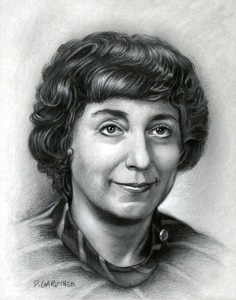
Strengthening Academic Excellence
Valencia N. Prock: 1970-1984
Valencia “Val” Prock, PhD, RN, FAAN, grew up in Ohio. After serving in the Army Nurse Corps during World War II, she attended the Frances Payne Bolton School of Nursing at Case Western Reserve University in Cleveland, where she received her bachelor of science (BS) and master of science (MS) degrees. She earned her doctor of philosophy (PhD) degree from the University of Chicago with a focus on aging – a field she found fascinating.
In 1965, Prock joined the School of Nursing as director of the public health nursing program. She was appointed dean of the School in 1970.
During her tenure, she helped create an innovative undergraduate curriculum and expanded the graduate programs to include medical-surgical nursing. In 1971, she added public health and psychiatric mental health to the master’s degree options.
In 1972, Prock helped secure a federal grant of $5.3 million for a new building. At that time, it was the largest federal grant ever given for the construction of nursing facilities. Five years later, she witnessed the fruits of her labor: the School of Nursing moved to the west side of campus and the brand new Clinical Sciences Center.
Throughout her deanship, Prock’s vision was to support the school’s research mission and establish the groundwork for a PhD program – something that the larger university opposed. But Prock wasn’t deterred. She hired more doctorally-prepared faculty and helped the existing faculty increase their credentials, encouraging them to return to school to prepare at the doctoral level. Further, she made it feasible by allowing half-time positions as her faculty earned their terminal degree. There had been only six doctorally-prepared faculty when she became dean in 1970. By 1983, she had grown that number to 31. Through her creative problem-solving and hard work, Prock created an environment where faculty could develop and research could flourish.
After Prock’s retirement in 1984, she joined the Peace Corps and was sent to Gambia as a community health nurse tutor. She was awarded an honorary doctoral degree from Edgewood College in Madison in 1991. She died in December 2003.
Leadership Against the Odds
Vivian M. Littlefield: 1984-1999
Vivian Littlefield, PhD, RN, FAAN, developed a love of nursing as a young child when she accompanied her grandfather on home visits to see patients in rural Princeton, Kentucky. She told her parents about her dream of becoming a doctor, but they told her she couldn’t because she was female. Littlefield decided to become a nurse instead, but her parents opposed that too.
“I’m the kind of person who says, if someone tells me I can’t do it, then I’m going to do it,” Littlefield said. “By the time I went off to college, I was already a feminist.” Little did she know that fighting against the odds would be a recurrent theme in her professional career.
To appease her parents, she enrolled as a ballet major when she went to college at Texas Christian University. But she refused to give up her dream of working in health care. Once she was in school, she rapidly switched to nursing. There was a significant nursing faculty shortage, so Littlefield began teaching a clinical course when she was only a senior. Her leadership skills quickly became evident, and Dean Lucy Harris told her, “You should be a dean.”
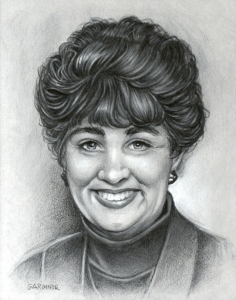
Littlefield earned her master’s degree at the University of Colorado in 1964 and began teaching as well as serving as the assistant dean of the nursing school. She earned her PhD in higher education from the University of Denver.
While earning her PhD, Littlefield was influenced by the work of nursing leaders at UW–Madison’s School of Nursing, including Signe Skott Cooper. There was mutual admiration between Littlefield and the leadership at the School of Nursing, and they began to recruit her as dean. She accepted the position in 1984, the same year the university’s Board of Regents had rejected forming a PhD program at the School of Nursing. Littlefield remembers a member of the UW System publicly stating, “Giving nurses a PhD is like giving teeth to a chicken.” Eventually the Board of Regents approved a PhD program in Nursing and Psychology for UW–Madison, and a PhD in Nursing for UW–Milwaukee.
Littlefield found herself charged with creating the program. “They told me I could do it, but there was no money,” she remembers. Money was so tight that one of her colleagues was allegedly fired for buying a new couch. “We put in a lot of effort to demonstrate that nursing was an academic, scholarly profession, and that nurses did in fact need PhDs,” she says. Despite the odds, Littlefield developed an outstanding PhD program – one of the accomplishments of which she was most proud. The program increased respect for the School of Nursing. “It changed the world I walked in at the university,” she said. During her deanship, she increased the number of doctoral students from just five to 30.
Her 16 years as dean – the longest tenure of any SoN dean so far – were filled with many more successes. Littlefield made use of technology to significantly expand distance education, including a cable TV course broadcast in the middle of the night and watched by students during the day. With the expansion of distance education to a non-live broadcast, Littlefield effectively oversaw the launch one of the earliest asynchronous offerings.
Despite pushback from some within the university who thought she didn’t have strong enough research credentials to be dean, one of the hallmarks of her legacy is that her dedication to nursing science led her to establish a culture and infrastructure to advance nursing research. She helped launch the first research newsletter and initiated a monthly colloquium the following year. In 1989, the Center for Instruction and Research was created. It housed audiovisual resources, computer facilities, an open laboratory, and technical support for faculty and students. Funding from the National Institutes of Health (NIH) increased significantly during Littlefield’s deanship, and the school was recognized as one of the top nursing schools in the country. Ever the visionary, Littlefield insured the protection of the current site of Signe Skott Cooper Hall and raised funds for the new building.
In celebration of her commitment to visionary leadership, the annual Littlefield Leadership Lecture Series was named in her honor.
When asked about her vision for the next 100 years of the School of Nursing, Littlefield said she has been impressed with the leadership of Dean Linda D. Scott. She hoped that the School of Nursing will continue to be well-funded, attract plenty of faculty to meet the continued demand for nurses, and that respect for nursing research and scholarship continues to grow.
“I also hope that one day we’ll see a nursing dean become chancellor,” she added with a smile.
Sadly, Littlefield passed away from an unexpected illness on August 22, 2023. While her passing was a loss felt throughout the School of Nursing community, her legacy lives on thanks to the tremendous impact she made in her time with the School.
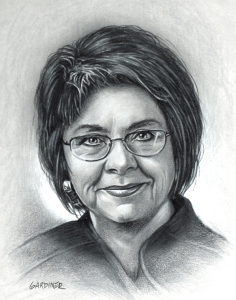
Fighting For a Worthy Home: Katharyn May: 2000-2016
Katharyn May, PhD, RN, FAAN, grew up outside of Philadelphia, Pennsylvania, where she played lacrosse and field hockey with dreams of one day competing at the collegiate level. But those dreams were cut short when she was badly injured during her sophomore year of high school. During this crisis, her mother Gloria stepped in, providing mentorship that would shape the rest of May’s life. She told May that she should go to nursing school.
“My mother was an extraordinary woman,” May remembers. “She pushed me hard, even as a little girl, to be a leader. When I was singing in the children’s choir at five years old and the director wanted me to sing a solo, there was no conversation about it – I was going to sing a solo. By the time I was in high school, I wasn’t afraid of getting up in front of a room because I had done it all my life.”
Gloria had always dreamed of becoming a nurse, but her family didn’t have the money to send her to nursing school, so she got a job as a secretary instead.
“She always thought that good nurses were a combination of smart and heart,” says May. “And she said they’re not often given credit for their smarts.”
May reluctantly agreed to pursue nursing. She decided to attend Duke University, where she received a full scholarship. To her surprise, she loved nursing.
Gloria stayed engaged in her daughter’s education. “Every semester, my mother would pay to ship my textbooks home, claiming they would be ‘safer’ there. I never understood why. At her wake, my sister told me that my mother had read every book.” Through her daughter, Gloria was finally able to realize her dream of studying nursing.
At college, May found strong female mentors who saw her potential and worked hard to open doors for her. Ruby Wilson was the dean of the nursing school at Duke at that time, and a legend in American nursing. Although Wilson and May often locked horns, Wilson challenged May to be her best. Even though May was planning to be a nurse midwife, Wilson encouraged her to pursue a PhD instead. May didn’t listen at the time, but the seed was planted.
Ramona Mercer was May’s faculty advisor during her master’s program at the University of California, San Francisco. May fondly remembers her as a “no-holds barred, intellectual Southern woman who swore like a longshoreman.”
One day, Mercer pulled May into her office and said, “What’s all this nonsense about you going to midwifery school? You’ll be crap at it.”
May asked why.
“Oh, you’ll probably be fine,” Mercer relented. “But you use that brain in ways that are completely incompatible with clinical nursing practice. You’re asking questions that people do not want you to ask. If you do clinical practice for more than a couple of years, it’ll kill you.”
Instead of a wake-up call, May says she was “mortally offended” after the meeting. But three months later, when Mercer presented her with an application to a PhD program, she agreed to apply.
“She was right, I would have been a terrible fit for clinical practice,” May laughs. “I was always blessed to have mentors who kept moving the goal posts and didn’t let me settle.”
Her hard work paid off. In 2001, she became the seventh dean of the UW–Madison School of Nursing.
“When I arrived at the School of Nursing, I found a tradition of curricular and program innovation that was unmatched in nursing at other great land grant universities.”
But there was a mystery that puzzled May. “The undergraduates knocked my socks off, and the School had some remarkable faculty brains. Their research was coming along, and they were part of an amazing university. So why was the School so small?”
She soon realized that resources were tight, and the school had been getting by on a shoestring. “We managed to do incredible, innovative research with a faculty less than half the size of many other nursing schools,” says May.
Many others before her had advocated for more resources, including her predecessor, Dean Littlefield, and nursing legend Signe Skott Cooper. Even so, “There were still people on this campus that thought we didn’t need a nursing school at UW–Madison,” she says. “I just had to keep hammering away. We were finally able to put those issues to rest during my tenure.”
May’s greatest point of pride is the construction of Signe Skott Cooper Hall, where the School of Nursing now resides.
She remembers the classrooms she found when she first came to UW–Madison. Buried deep in the basement of the hospital, she recalls that they were a “horror show.” The rooms were so cavernous that when she taught classes there, she couldn’t see the back third of the room. “I could have done a fan dance and I would still lose my students.” May knew they had to get out of there.
Slowly, the vision moved towards reality. Dean Littlefield had protected the site where Cooper Hall would eventually live and had begun finding donors at the end of her tenure. The faculty were fully in support of the building, and the School was blessed with alumni who gave “their hearts, blood, sweat, and tears,” says May. Through collective effort, they were able to attract major gifts from generous donors.
However, the new building was fraught with challenges. The state legislature stopped the project three times. The third time, May had to call 66 donors to explain what had happened.
“I was ready to resign,” she says. “I walked into the provost’s office with my resignation letter in my briefcase.”
But then-Provost Sarah Mangelsdorf looked across the table and said, “No. Wait it out.” They waited. Mangelsdorf proved right. Eventually, the funding came through.
The new building, named for Signe Skott Cooper, opened its doors in 2014. The $53 million educational facility was cutting-edge in every way, including energy efficiency and environmental design. It remains one of the most innovative and advanced teaching and academic nursing research facilities in the country today. With high-fidelity simulation labs, 25 research suites, an active-learning classroom complex, exercise and meditation spaces, a spacious lounge, and an accessible auditorium, Cooper Hall showcased the power, impact, and future of nursing.
Moreover, the building was, and still is, beautiful. May notes that in Florence Nightingale’s 1848 book Notes on Nursing, she said that a nurse’s primary responsibility is to put the environment in such a state that it supports the patient’s recovery. Nightingale wrote that, “At all times, there should be something beautiful for the patient to look at.” May took her wisdom to heart.
Not only is the building beautiful, but it inspires pride and teaches students about nursing history.
“The fall we opened, I was walking through just making sure stuff was working the way it was supposed to work,” remembers May. “I walk through the lobby and there’s a nursing student in her uniform walking slowly along the history wall, reading every single thing. Then she turns, and she has tears in her eyes,” May says. “I asked her if everything was ok, and she says, ‘Would you please make it mandatory for all students to read this?’”
In addition to Cooper Hall, May has a long list of accomplishments as dean. She helped expand the Littlefield Leadership Lecture Series and led the creation of an innovative partnership with Gunderson Lutheran Medical Center to launch a satellite campus in La Crosse, Wisconsin. She contributed to the completion of the Health Sciences Learning Center, established a nurse residency partnership with UW Health, and supported faculty in proposing changes to make an online master’s program available to RNs throughout the state. She developed resources to grow the undergraduate program from 80 to 100 students, with a focus on enrolling underrepresented students. In 2010, she oversaw the launch of the Doctor of Nursing Practice (DNP) program.
May retired in 2015. When asked about her vision for the next 100 years of the School of Nursing, she says, “I believe that nursing as a profession relies on human intelligence and compassion, as well as hard science and technology. We’re just now starting to understand what technology can do for human health and healing. Being innovators in technology is in the School’s DNA.”
“I’m a huge fan of Star Trek and the character of Nurse Chapel,” May laughs. “In the future, I think there will be devices that help nurses assess situational human health, as well as devices that help us put information directly into the hands of people who need it, whether they are facing environmental disasters or emerging communicable diseases. I think that’s where the School is going to shine — putting science and technology to work for people — because we’ve never lost sight of the Wisconsin Idea: serving the state and serving the world.”
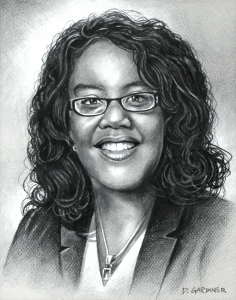
Visionary Leadership Through Unprecedented Times
Linda D. Scott: 2016-Present
From the time she was a little girl, Dean Linda D. Scott, PhD, RN, NEA-BC, FNAP, FAAN, wanted to be a nurse. “I remember having all my dolls lined up on my bed. I pretended it was the ward and I was caring for them.” From the images in books she’d read about Florence Nightingale, she knew nurses needed to wear capes. She didn’t have one, so she draped a blanket around her shoulders instead. “I just knew that when I graduated, I’d finally have a real cape – even though of course, I didn’t,” Scott smiles.
Her mother was a nurse attendant at a psychiatric hospital, which exposed her to nursing at an early age. She learned a great deal from her mother’s experiences and remained fascinated by health care and nursing practice.
Scott faced obstacles on the way to realizing her dream. “When I was in high school, I was all ready to enroll in college prep courses. But my counselor said I wasn’t ‘suitable’ for college. She said I should take typing and shorthand classes because I would need to get a job right after high school. I think she believed that because of my race and gender.”
After hearing about the discrimination her daughter had faced, Scott’s mother met with the principal. “I ended up with college prep courses and a new counselor,” Scott says.
The experience left a mark. “It always haunted me that I wasn’t good enough,” she says. But it also led Scott to be a staunch advocate for health equity and underrepresented students throughout her career.
Scott earned her undergraduate degree from Michigan State University in East Lansing, her master’s degree from Grand Valley State in Allendale, Michigan, and her PhD in nursing from the University of Michigan in Ann Arbor.
As a leading scholar in sleep and health services research, her research on workforce issues has influenced the direction of health policy formation as the nation struggles to provide patient-centered, quality health care amidst a significant nursing workforce shortage. Scott has also led diversity efforts across academic degrees and curricula, such as the implementation of holistic admissions review; a strategy to enhance the diversity of the nursing workforce and improve patient outcomes by having a nursing profession that mirrors the populations it serves.
Scott became dean of the UW–Madison School of Nursing in July 2016. Her innovative approach and focus on advancing strategic priorities have led to growth in the number and diversity of faculty members, greater financial stability, implementation of diversity initiatives, and the launch of a centennial campaign. To advance the school’s vision of improving health for all, the School also adopted Inclusive Excellence as the fifth—and central—pillar of the school’s strategic framework.
Recognized for her expertise and impact, Scott has received numerous national honors and awards. She is widely sought for membership or input where some of health care’s most complex issues are addressed. After being nominated to run for president-elect of the American Academy of Nursing (AAN), she did so and assumed a two-year term in October 2021. Scott officially transitioned to the role of president of the AAN on October 7, 2023, and she will lead the organization through October 2025. She is also a fellow of the National Academies of Practice and a member of Sigma Theta Tau honor society for nursing. Scott served as an associate editor for Nursing Outlook, the official journal of the American Academy of Nursing. In June 2022, she accepted a nomination to become a member of the National Academies of Sciences, Engineering, and Medicine’s Board of Health Care Services.
One of Scott’s biggest points of pride from her eight years as dean is the commitment, leadership, and innovation that were shown throughout the School during the pandemic. Specifically, she notes the difference it made for students and for the School’s ability to contribute to the nursing workforce without an interruption or a setback in preparedness. “The unthinkable challenges being faced in health care settings made it impossible for our clinical partners to host nursing students,” Scott recalls. “While this was unavoidable, it presented a significant additional challenge for achieving continuity in nursing education and student progression.”
Scott remembers a crucial point during the complicated campus-wide academic planning discussions as the pandemic worsened. While campus and system leaders were making the difficult decision to stop in-person learning, she had to assertively advocate for the ability to keep School of Nursing students on-site in Cooper Hall. She argued Cooper Hall offered the highest possibility of replicating the experiential learning and skill-building that would otherwise be gained in clinical settings. By emphasizing the correlation between lost learning opportunities for students and their readiness to serve future patients, Scott successfully made the case. Her appeal was not unlike those that had already been made by her predecessors. She advocated for the opportunity to educate nurses in the very best way that the time and circumstances allowed.
Scott and the School of Nursing’s other academic leaders balanced concerns for students’ health and well-being and the critical need for students to build clinical skills to the point of mastery to graduate as practice-ready nurses. There was no option to cut corners. Students had to continue learning and developing so they could attain and master skills at the same level of excellence as they would have under normal circumstances. “An incredible amount of innovative and creative thinking was put into the planning for in-person experiential learning,” Scott proudly states. “Student learning was a true partnership between students, faculty, and staff. I would never again want to ask for what was demanded from our School community, but I am proud of the persistence shown by all. And, by keeping our students ‘on track’, we were able to retain stability for the School — avoiding further disruptions for students and the workforce.”
Scott believes that some of the creativity and commitment shown during that critical time is part of the legacy that makes the School of Nursing special. It is drawn from conviction about the role of nurses in advancing and protecting health and leading change in the profession and society.
What unites Dean Scott with the seven other women who came before her is that they all had to address the needs of the time through nursing education, research, and practice. “We are all very different people, but we all strive to meet the most pressing issues of our time. We all hold that vision of truly transforming health care and extending health equity.”
Going forward, nursing workforce, nursing faculty needs, and health equity are the greatest issues that Dean Scott will continue to address. “I envision a future where we have equitable quality of care for marginalized populations, where everyone has access to affordable health care.” She adds, “I also want to see nurses have full practice authority. We educate nurses from bedside to boardroom, and we need them at the table.”
When thinking about her own future, Scott says she’s happy where she is. “Being dean of this school was my destination position,” she says. “What I love about being dean is one of the same things I loved about being a nurse: making a difference. As a nurse, my goal was to make a difference for patients and their families. As dean, my goal is to make a difference for my employees and students. If I think about every patient that our students touch, as students and then as graduates, and all the people our faculty touch through their research and scholarship, then I have the widest band of impact that a person could have. So that’s what I love about being dean.”
Looking ahead to the next 100 years of the School of Nursing, Scott says, “It’s not just about resting on the accomplishments of our past 100 years. It’s truly the legacy that we carry forward into our future. The title for our centennial campaign is Badger Nurses Change Lives because they really do.”
But wait… There’s more!
The School’s first director was technically Florence Patterson
Florence Patterson is on record as serving in her role of director of the School of Nursing from 1920 to 1921. Unfortunately, Patterson’s time was cut short halfway through the first semester of academic programming when the university was unable to provide funding to keep the School operating.
The School of Nursing had an acting director
Margaret Emanuel served as acting director of the School of Nursing in between Christina Murray and Margery MacLachlan from 1948 to 1949.
The School also had two acting deans
The School’s first acting dean was Louise C. Smith, who served in the role in 1970 between Deans Bunge and Prock
Pat A. Lasky took on the role of acting dean after Dean Vivian Littlefield retired in 1999. She served in the role until 2000 when Dean May began her deanship.
